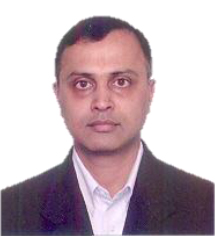By Prasanna Rajanna
May 2011
Abstract
As an organization grows, the strategy to manage the evolution is a challenge. There's a clear need for meticulously monitored initiatives that will impact the newer versions of the organization. While people are the assets, organization energy should be larger than the sum total energy of its people contained therein. How do we sustain this energy to be on the winning platform? Visibility of the key performers and percolating the vision amongst all stake holders has to be consistent. This paper talks about a few practical initiatives that can be taken with their respective challenges. Application of these initiatives and measurement will have to continue in a cyclic manner.
About the Author:
 Prasanna Rajanna is Principal Consultant for Business Platforms Unit at Infosys Technologies Limited at Bangalore in India (www.infosys.com). He has over a decade + experience in CRM solution architecting. While implementing Siebel CRM for Telecom, retail, healthcare and automotive companies in Europe and United States, he has advocated clients, how to derive maximum benefits of the product, streamlining the process that best suits for that specific industry. Prior to CRM, Prasanna has held various functional head / marketing management roles for nearly 9 + years in manufacturing & retail companies. He has managed countrywide partner & distributor network.
Prasanna Rajanna is Principal Consultant for Business Platforms Unit at Infosys Technologies Limited at Bangalore in India (www.infosys.com). He has over a decade + experience in CRM solution architecting. While implementing Siebel CRM for Telecom, retail, healthcare and automotive companies in Europe and United States, he has advocated clients, how to derive maximum benefits of the product, streamlining the process that best suits for that specific industry. Prior to CRM, Prasanna has held various functional head / marketing management roles for nearly 9 + years in manufacturing & retail companies. He has managed countrywide partner & distributor network.
His passion is to think deep and create innovative solutions that benefit all stake holders
Email: Prasanna_Rajanna@Infosys.com
Nr.Prasanna@gmail.com
Welcome to CEO Watch, where we take stock of the business world's major players, while providing weekly news roundups from the world of Wall Street. Here we profile the CEOs and their firms – those reinventing their companies amid bleak economic times and those unlikely to recover from historic losses. We tally Corporate America's wins and losses while providing insight into the capitalism's insiders. We mean business.
